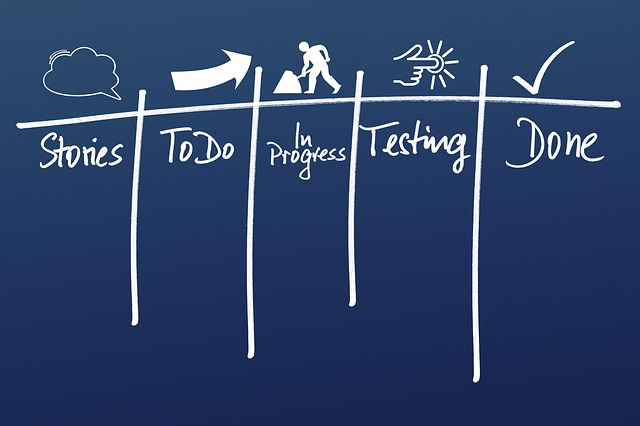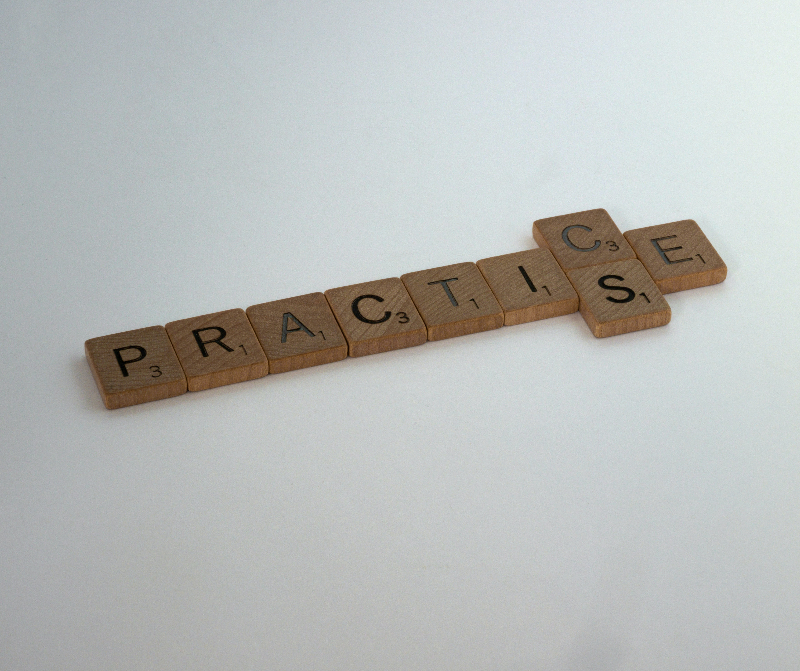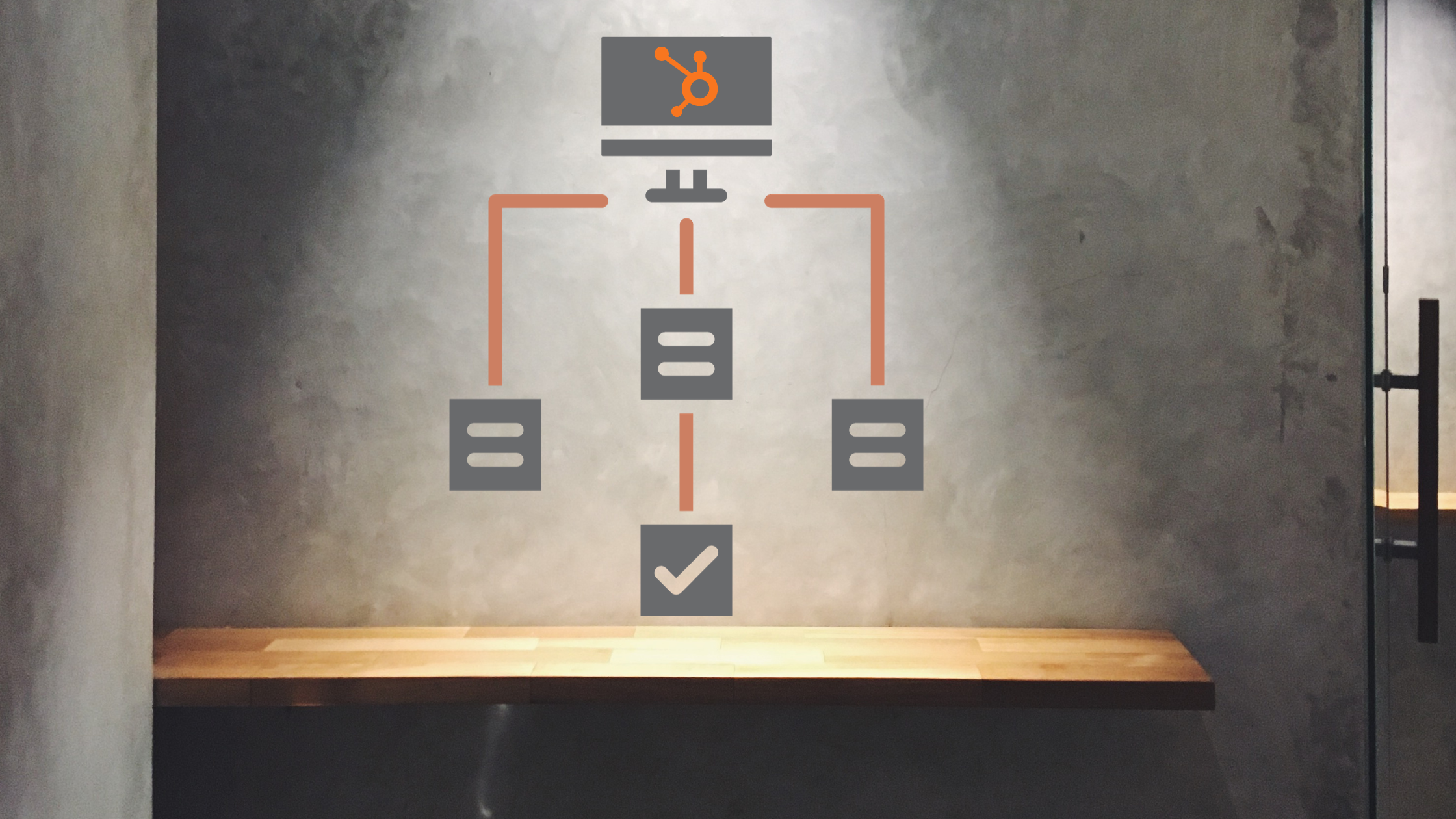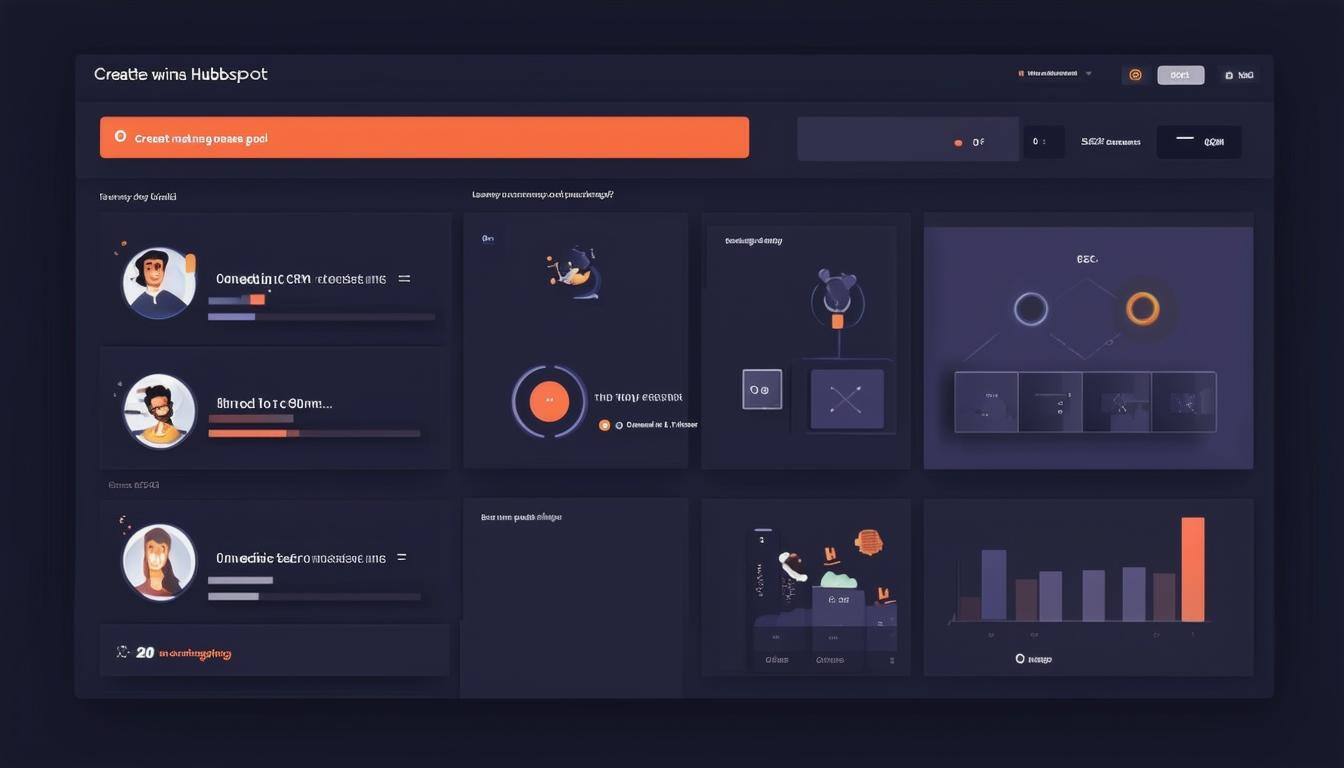Maximising Efficiency with Email Marketing Workflow Automation
Do you feel like you're constantly sending the same emails to the same people, with little time left for anything else? It's time to take a closer look at email workflow automation.
By automating repetitive and time-consuming tasks, businesses can save time, improve the efficiency of their email campaigns, and achieve better results. In this article, we'll show you how to create an email marketing workflow, automate it, and optimise it for maximum efficiency and results. Plus, we'll share case studies of businesses that have achieved success with email automation and reveal the pros and cons of automating your email marketing workflows.
So if you're ready to free up more time, improve the accuracy and consistency of your email campaigns, and increase your efficiency, keep reading.
The benefits of automating email workflows

The benefits of automating email marketing workflows are numerous. Automation allows businesses to:
-
Save time: Automation eliminates the need to manually send emails or create email campaigns. This frees up time for other tasks, such as creating new content or analysing data.
-
Improve accuracy and consistency: Automation ensures that emails are sent at the right time, to the right people, and with the correct content. This reduces the risk of errors and improves the overall quality of the email marketing campaign.
-
Increase efficiency: Automation allows businesses to send targeted and personalised emails at scale. This increases the chances of conversion and leads to better results.
-
Enhance customer experience: Automation allows businesses to send relevant and timely emails to their customers, improving the overall customer experience.
Next, we will explore the concept of email marketing workflow automation in more detail, including how to create an email marketing workflow, how to automate it, and how to optimise it for maximum efficiency and results.
What is an email marketing workflow?
An email workflow is a series of automated emails that are triggered by specific actions or events. These emails are designed to engage and nurture leads, educate and inform customers, or promote products and services.
Here are a few examples of email workflows that might be relevant to an Australian business that builds new homes:
-
Lead generation: A series of emails that are triggered when a potential customer submits a form on the business's website or attends an event. These emails might include educational content, case studies, and special offers to encourage the lead to take further action.
-
Customer onboarding: A series of emails that are triggered when a new customer purchases a home. These contact emails might include information about the home building process, deadlines and milestones, and contact information for the project manager.
-
Cross-selling and upselling: A series of emails that are triggered when a customer completes a home purchase. These upsell emails might include recommendations for complementary products or services, such as landscaping or interior design, or special offers for repeat business.
The elements of a successful email marketing workflow
A successful email marketing workflow should include the following elements:
-
Clear goals and objectives: It's important to have a clear understanding of what you want to achieve with your email marketing workflow. Do you want to generate leads, nurture relationships, or promote a specific product or service? Setting clear goals and objectives will help you create a more effective email marketing workflow.
-
Targeted and segmented email lists: Sending the same emails to everyone on your email list is unlikely to be effective. Instead, it's important to segment your email list based on factors such as demographics, interests, and behaviour. This will allow you to send targeted and personalised emails that are more relevant to each individual recipient.
-
Engaging and valuable content: The content of your emails should be engaging, informative, and valuable to your target audience. This might include educational articles, tips and tricks, case studies, or special offers.
-
Effective subject lines and calls to action: The subject line of your email and the call to action (CTA) are crucial for getting your emails opened and clicked. Make sure to craft compelling subject lines and use them.
How to create an email marketing workflow
Creating a successful email marketing workflow can be a challenge, but with the right guidance and tips it can be made easy! Here's how to get started with setting up your automated emails, triggered by specific actions or events.
Identifying your target audience and goals
Before you start creating your email marketing workflow, it's important to understand who your target audience is and what you want to achieve. Do you want to generate leads, nurture relationships, or promote a specific product or service?
For an Australian business that builds new homes, your target audience might include potential home buyers, current home buyers, and past home buyers. Your goals might include generating leads, nurturing relationships with current and past customers, and promoting new home developments or special offers.
Creating a content calendar

Once you've identified your target audience and goals, it's time to start planning the content of your emails. A content calendar is a useful tool for organising your email marketing workflow and ensuring that you're sending relevant and timely emails to your audience.
Your content calendar might include:
-
Emails promoting new home developments and special offers
-
Emails with tips and advice for home buyers
-
Emails with updates on the home building process
-
Emails with recommendations for complementary products or services, such as landscaping or interior design
Setting up triggers and segmentation
Triggers are specific actions or events that trigger the sending of an email as part of your email marketing workflow. For example, if someone submits a form on your website or attends an event, that might trigger the sending of an email in your lead generation workflow.
Segmentation is the process of dividing your email list into smaller groups based on common characteristics, such as demographics, interests, or behaviour. This allows you to send targeted and personalised emails that are more relevant to each individual recipient.
For example, you might segment your email list based on factors such as:
-
Potential home buyers vs. current home buyers vs. past home buyers
-
Location (e.g. city, region, state)
-
Interests (e.g. type of home, price range, number of bedrooms)
By setting up triggers and segmenting your email list, you can create a more targeted and personalised email marketing workflow that is more likely to achieve your goals.
How to automate your email marketing workflow

Once you've identified your triggers and segmentation, it's time to automate the process. Here's how to automate your email marketing workflow:
Choosing the right email marketing automation tool
There are many email marketing automation tools on the market, each with its own set of features and pricing. Some popular options include HubSpot, Mailchimp, and ActiveCampaign.
When choosing an email marketing automation tool, consider factors such as:
-
Price: How much does the tool cost, and what features are included at each pricing tier?
-
Ease of use: Is the tool easy to set up and use, or does it require a steep learning curve?
-
Integrations: Does the tool integrate with other marketing and sales platforms, such as CRM systems or social media?
-
Customer support: Is there good customer support available, in case you have questions or encounter problems?
Integrating with other marketing and sales platforms
Many email marketing automation tools integrate with other marketing and sales platforms, such as CRM systems and social media. This allows you to seamlessly connect your email marketing workflow with other parts of your business.
For example, you might use HubSpot to automate your email marketing workflow, and integrate it with Salesforce to track sales leads and deals. This allows you to see the complete customer journey, from initial lead to final sale.
Setting up automated emails and campaigns
Once you've chosen an marketing automation tool and set up any necessary integrations, it's time to start setting up your automated emails and campaigns.
This might include:
-
Setting up triggers and rules for sending emails
-
Creating email templates and content
-
Setting up drip campaigns and nurture sequences
-
Tracking and analysing the performance of your emails and campaigns
By setting up automated emails and campaigns, you can streamline your email marketing workflow and free up more time for other tasks.
Tips for optimising your email marketing workflow automation

There are several ways to optimise it for better results. Here are a few tips:
Testing and measuring the performance of your campaigns
It's important to regularly test and measure the performance of your email marketing campaigns. This will allow you to identify areas for improvement and make adjustments as needed.
There are several metrics you can track, such as:
-
Open rate: The percentage of recipients who open your email
-
Click-through rate (CTR): The percentage of recipients who click on a link in your email
-
Conversion rate: The percentage of recipients who complete a desired action (such as making a purchase or filling out a form)
By testing different subject lines, email content, and calls to action, you can optimise your email marketing workflow for better results.
For example, if you're an online retailer selling women's clothing, you might A/B test different subject lines to see which ones have the highest open rate. You might also test different email content and calls to action to see which ones have the highest CTR and conversion rate.
Personalising and segmenting your email lists
As mentioned earlier, segmenting your email list based on common characteristics allows you to send targeted and personalised emails that are more relevant to each individual recipient.
For example, if you're an online retailer selling women's clothing, you might segment your email list based on factors such as age, location, and interests. This allows you to send more personalised emails that are more likely to be relevant and engage the recipient.
A/B testing subject lines and email content
A/B testing involves comparing two versions of an email (version A and version B) to see which one performs better. This can be an effective way to optimise your email marketing workflow for better results.
For example, if you're an online retailer selling women's clothing, you might A/B test different subject lines to see which ones have the highest open rate. You might also test different email content and calls to action to see which ones have the highest CTR and conversion rate.
To A/B test your subject lines and email content, you'll need to use an email automation tool that has A/B testing capabilities. Many tools, such as HubSpot, offer this feature. Simply create two versions of your email, and the tool will send each version to a randomly selected group of recipients. The tool will then track and compare the results of each version, and you can see which one performed better.
By A/B testing your subject lines and email content, you can identify what works best for your audience and optimise your email marketing workflow accordingly.
Best practices for email marketing workflow automation

Email marketing workflow automation can be a powerful tool for businesses, but it's important to follow best practices to ensure compliance and avoid damaging your reputation. Here are a few best practices to keep in mind:
Obtaining consent
It's important to obtain consent from recipients before sending them emails as part of your email marketing workflow. This includes obtaining explicit consent for marketing emails, as well as providing an easy way for recipients to unsubscribe.
In Australia, the Spam Act 2003 requires businesses to obtain consent before sending commercial electronic messages (CEMs), which includes marketing emails. The Act also requires businesses to provide a functional unsubscribe facility in all CEMs.
Personalising and segmenting your email lists
As mentioned earlier, segmenting your email list based on common characteristics allows you to send targeted and personalised emails that are more relevant to each individual recipient. This not only improves the effectiveness of your emails, but it also helps to ensure compliance with email spam laws.
Ensuring deliverability
Deliverability refers to the ability of your emails to reach the inbox of your recipients. A low deliverability rate can significantly impact the effectiveness of your email marketing workflow.
To ensure deliverability, it's important to:
-
Use a reputable email marketing automation tool
-
Follow best practices for email design and formatting
-
Keep your email list clean and up-to-date
-
Monitor and address any bounces or complaints
By following these best practices, you can ensure that your emails are delivered to the inbox of your recipients and avoid damaging your reputation.
Common challenges and pitfalls of email marketing workflow automation

We see many challenges from our clients, but here are a few common challenges and pitfalls to watch out for:
Lack of personalization and relevance
One of the benefits of email marketing workflow automation is the ability to send targeted and personalised emails at scale. However, if you're not careful, it's easy to lose the personal touch and send generic or irrelevant emails to your audience.
To avoid this pitfall, make sure to segment your email list based on common characteristics and create targeted and personalised email content.
Overuse of automation
While automation can save time and improve the efficiency of your email marketing campaigns, it's important not to rely on automation too heavily. If you're not careful, your emails might come across as impersonal or robotic.
To avoid this pitfall, make sure to mix in some manually-triggered emails and personal touches, such as personalised subject lines and messages.
Complexity and lack of flexibility
Email marketing workflow automation requires a certain level of complexity, as it involves setting up triggers, rules, and other technical elements. If you're not familiar with the process, it can be challenging to get everything set up and working correctly.
Additionally, email marketing workflow automation can be inflexible. Once you've set up your workflow, it can be difficult to make changes or pivot in a different direction.
To avoid these pitfalls, it's important to choose an email marketing automation tool that is easy to use and offers a good level of flexibility. It may also be helpful to seek out training or guidance from a professional email marketing automation agency.
For example, if you're a SaaS company, you might encounter challenges with integrating your email marketing workflow with your CRM system or sales processes. It's important to choose an email marketing automation tool that integrates seamlessly with your other systems, and to work with a professional who can help you set everything up correctly.
How to troubleshoot and fix common email marketing workflow issues

Even with the best planning and execution, issues can arise with email marketing workflow automation. Here's how to troubleshoot and fix some common issues:
Email deliverability issues
If you're experiencing low deliverability rates or your emails are ending up in the spam folder, there could be a number of issues at play.
To troubleshoot email deliverability issues, try the following:
-
Check your sending domain and IP address: Are they reputable and not on any blacklists?
-
Check your email content and design: Is your email formatting and design consistent with best practices? Are you using spam trigger words or phrases?
-
Check your email list: Is it clean and up-to-date, with only opted-in and engaged recipients?
-
Check your email sending frequency: Are you sending too many emails too quickly?
If you're using HubSpot for your email marketing automation, you can use the Deliverability tool to help diagnose and fix email deliverability issues.
Triggers and rules not working as expected
If your email marketing workflow isn't triggering and sending emails as expected, there could be a problem with your triggers and rules.
To troubleshoot trigger and rule issues, try the following:
-
Check your trigger and rule settings: Are they set up correctly and in line with your goals?
-
Check your integration with other systems: If you're integrating with other platforms, such as a CRM system, make sure the integration is working correctly.
-
Check your data: Make sure your data is clean and accurate, as this can impact the accuracy of your triggers and rules.
If you're using HubSpot for your email marketing automation, you can use the Workflow Debugger tool to help diagnose and fix trigger and rule issues.
Email content or design issues
If your emails are not performing as well as expected, or you're experiencing low open rates, CTRs, or conversion rates, there could be issues with your email content or design.
To troubleshoot email content and design issues, try the following:
-
A/B test different subject lines, email content, and calls to action to see what works best for your audience
-
Make sure your email content is relevant, valuable, and engaging
-
Follow best practices for email design and formatting, such as using a clear and consistent layout, formatting text correctly, and using high-quality images.
Advanced email marketing workflow automation techniques

Once you've mastered the basics of email marketing workflow automation, you can start exploring advanced techniques to further optimise your campaigns. Here are a few examples:
Multi-step campaigns and nurture sequences
Multi-step campaigns and nurture sequences allow you to create complex email marketing campaigns that are triggered by specific actions or events.
For example, you might set up a nurture sequence for new leads that includes a series of automated emails over a period of time. Each email in the sequence might be triggered by a specific action, such as filling out a form or visiting a specific page on your website.
To set up multi-step campaigns and nurture sequences, you'll need an email marketing automation tool that offers these features, such as HubSpot.
Personalization and dynamic content
Personalization and dynamic content allow you to create highly targeted and personalised email campaigns.
Personalization involves using information about your recipients, such as their name or location, to create more targeted and relevant emails.
Dynamic content allows you to show different content to different recipients based on specific criteria, such as their location or interests.
To use personalization and dynamic content, you'll need an email marketing automation tool that offers these features, such as HubSpot.
Advanced segmentation
Advanced segmentation allows you to create highly targeted and personalised email campaigns by segmenting your email list based on advanced criteria, such as behaviours and interactions.
For example, you might segment your email list based on which pages a recipient has visited on your website or which emails they have opened. This allows you to create highly targeted and relevant emails based on the interests and behaviours of your recipients.
To use advanced segmentation, you'll need an email marketing automation tool that offers these features, such as HubSpot.
Pros and cons of email marketing workflow automation

It's important to understand the pros and cons before making your decision. Here's a breakdown of what email marketing workflow automation can offer - including the benefits as well as potential drawbacks.
Pros
-
Saves time: Email marketing workflow automation allows you to automate repetitive tasks, freeing up your time to focus on other important tasks.
-
Improves efficiency: By automating tasks, you can reduce the risk of errors and improve the efficiency of your email marketing campaigns.
-
Increases personalization and relevance: Email marketing workflow automation allows you to send targeted and personalised emails at scale, improving the relevance and effectiveness of your emails.
-
Increases efficiency: By automating tasks, you can reduce the risk of errors and improve the efficiency of your email marketing campaigns.
-
Increases ROI: By improving the efficiency and effectiveness of your email marketing campaigns, you can increase your return on investment.
Cons
-
Initial setup and learning curve: Setting up an email marketing workflow automation system can be complex and time-consuming. It may require a learning curve to understand how to set up and use the system effectively.
-
Inflexibility: Once you've set up your email marketing workflow, it can be difficult to make changes or pivot in a different direction.
-
Loss of personal touch: If you rely too heavily on automation, your emails might come across as impersonal or robotic.
-
Potential for mistakes: If you make mistakes when setting up your email marketing workflow, it can impact the accuracy and effectiveness of your campaigns.
-
Cost: Email marketing automation tools can be expensive, and the cost may not be justified for small businesses or organisations with limited budgets.
When to consider outsourcing your email marketing workflow automation

There may be times when it makes sense to outsource your email marketing workflow automation to a professional agency. Here are a few situations to consider:
You don't have the time or resources
If you don't have the time or resources to set up and manage your own email marketing workflow automation system, outsourcing to a professional agency can save you time and hassle. A professional agency will have the expertise and resources to set up and manage your email marketing workflow, allowing you to focus on other important tasks.
You don't have the expertise
If you're new to email marketing workflow automation, or you're not familiar with the technical aspects of setting up and managing a system, outsourcing to a professional agency can be a good option. A professional agency will have the expertise and experience to set up and manage your email marketing workflow, ensuring that it's set up correctly and running smoothly.
The benefits of working with a certified partner like Crocodile Marketing
Working with a certified partner like Crocodile Marketing has several benefits. As a certified partner, Crocodile Marketing has received specialised training and support from HubSpot, and has the expertise and experience to set up and manage your HubSpot email marketing workflow.
In addition, we offer a range of services, including HubSpot training and integration, to help you get the most out of your email marketing automation.
The cost and time savings of outsourcing email marketing automation
Outsourcing your email marketing automation to a professional agency can save you both time and money. A professional agency will have the expertise and resources to set up and manage your email marketing workflow, freeing up your time to focus on other important tasks. Additionally, outsourcing can save you money in the long run, as it can be more cost-effective than trying to set up and manage your own email marketing workflow.

Conclusion
In this article, we've covered the basics of email marketing workflow automation, including what it is, how it works, and how to set it up. We've also discussed the benefits and challenges of email marketing workflow automation, as well as advanced techniques and when to consider outsourcing to a professional agency.
Key takeaways:
-
Email marketing workflow automation allows you to automate repetitive tasks, saving time and improving efficiency.
-
Email marketing workflow automation allows you to send targeted and personalised emails at scale, improving the relevance and effectiveness of your emails.
-
Email marketing workflow automation requires a certain level of complexity and can be inflexible once set up.
-
Email marketing workflow automation can be a powerful tool for businesses, but it's important to follow best practices and avoid common pitfalls.
-
There may be times when it makes sense to outsource your email marketing workflow automation to a professional agency, such as if you don't have the time or resources, or if you don't have the expertise.
If you're considering email marketing workflow automation for your business, it's important to carefully weigh the pros and cons and choose the right approach for your needs. Whether you decide to set it up yourself or outsource to a professional agency, email marketing workflow automation can be a powerful tool for improving the efficiency and effectiveness of your email marketing campaigns.
Additional resources
These guides cover a wide range of topics related to email marketing, including best practices, tips and tricks, and case studies. They are a great resource for businesses looking to improve their email marketing strategy and get the most out of email marketing automation.
-
HubSpot's Ultimate Guide to Email Marketing: https://blog.HubSpot.com/marketing/email-marketing-guide
-
Mailchimp's Guide to Email Marketing: https://mailchimp.com/en-au/email-marketing/
-
GetResponse's Email Marketing Guide: https://www.getresponse.com/blog/email-marketing-for-beginners
-
Campaign Monitor's Email Marketing Guide: https://www.campaignmonitor.com/resources/guides/modern-guidebook-email-marketing/
-
Klaviyo's Email Marketing Guide: https://www.klaviyo.com/blog/build-email-marketing-process
These guides cover a wide range of topics related to email marketing, including best practices, tips and tricks, and case studies. They are a great resource for businesses looking to improve their email marketing strategy and get the most out of email marketing automation.





